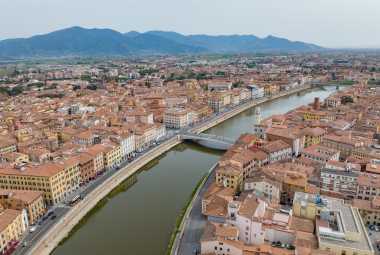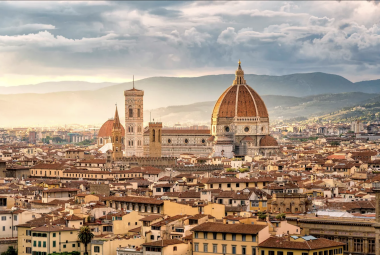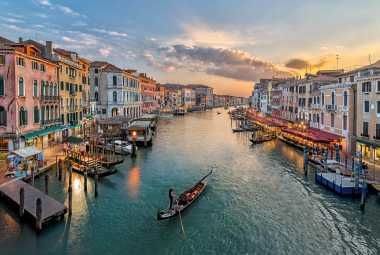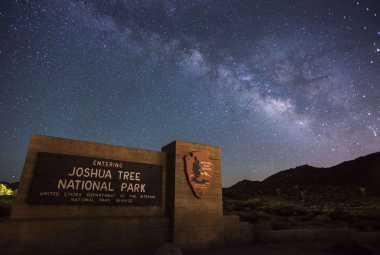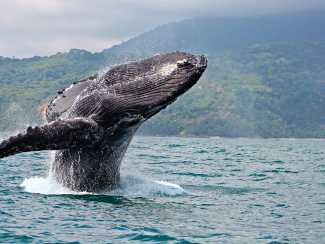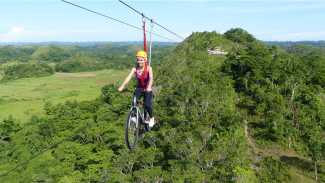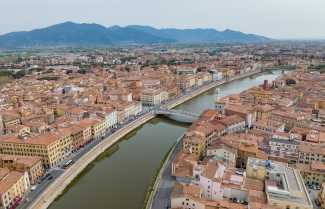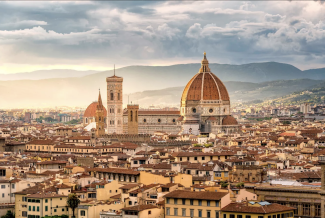Image by flickr.com
*Vacation Mode is a for-profit site. It contains paid banner advertisements that are generated and managed by a third-party network. This site also includes relevant affiliate links (both in the content and on the sidebar) all of which we do our best to clearly mark as such.
Is Costa Rica affected by Hurricane Season?
Yes.
Hurricane Otto struck Costa Rica in 1998, Hurricane Dean struck in 2004, and Hurricane Felix struck in 2007. Over the course of its history, Costa Rica has been hit by a number of hurricanes. These storms caused severe damage to homes and businesses, and as a result, a large number of residents were forced to evacuate their residences.
In point of fact, the National Oceanic and Atmospheric Administration (NOAA) reports that between the years 1950 and 2010, Costa Rica was struck by a total of five tropical cyclones. The most current hurricane season started on June 1st, 2017, and continued through November 30th of the same year. During this time period, Costa Rica was hit by a total of two tropical storms and three major hurricanes.
These storms did not do a significant amount of damage to the country, but they did bring with them torrential rains and high gusts. In addition to this, the storms caused flooding in regions that were already vulnerable to it. As a direct consequence of this, a great deal of property, including roadways, bridges, and electricity lines, was destroyed. Thankfully, there were neither fatalities nor injuries recorded during the storm season.
However, the effects of the storms continued to be felt for a considerable amount of time after the final storm had passed. A great number of property owners still needed to make repairs to the roofs, windows, and other elements of their homes. Some of the locals had their homes completely destroyed.
To its credit, Costa Rica does have a plan in place to deal with emergency situations. The national government claims that the country has sufficient supplies to weather a hurricane with a Category 5 rating. On the other hand, emergency personnel will be prepared to act in the event that a more severe storm strikes.

When is hurricane season in Costa Rica?
Although they are uncommon, hurricanes most frequently occur between mid-October to mid-November. Hurricanes Nate (October 4–11, 2017), Eta (October 31–November 14, 2020), and Otto (October 4–11, 2017) have all recently devastated Costa Rica (November 17-26, 2016).
Background
Over the course of its history, Costa Rica has had its fair share of hurricanes. Hurricane Otto was, in point of fact, the most powerful hurricane that has ever been recorded in the history of Costa Rica. It caused significant damage and forced thousands of people to seek refuge elsewhere.
Even though these hurricanes were extremely destructive, tourism in Costa Rica continued as normal despite the chaos they caused. Despite the fact that the country has been struck by a number of big storms over the course of the previous several decades, it continues to draw in millions of tourists each year.
In point of fact, a good number of hotels and resorts keep operating even in the midst of a natural disaster. Even while they might go through some periods of downtime, they often recover really fast.
This is because the vast majority of enterprises are concentrated in the interior regions. As a consequence of this, they are not immediately impacted by the weather patterns of tropical regions. In spite of this, they are nevertheless susceptible to flooding and other types of natural calamities.
Rainy Season in Costa Rica
During the wet season, when there is typically a lot of rainfall, there is an increased risk of landslides. These landslides have the potential to cause damage to roads and bridges, making it more difficult to travel. The rain also causes rivers to rise, which in turn floods low-lying areas and causes the weather to become extremely harsh.
In addition to the devastation caused by natural disasters, Costa Rica is frequently struck by earthquakes. Buildings and other structures can sustain substantial damage from earthquakes, and many people have been forced out of their homes as a direct result of these natural disasters.
The effects of hurricanes and earthquakes are catastrophic, but they are not the only threats that Costa Ricans confront during the rainy season. During this time of year, there is an increased risk of flooding. There is a corresponding rise in the likelihood of violent crimes such as armed robberies and kidnappings.
Early Rainy Season – May June July
The country of Costa Rica has seen an extremely wet start to the rainy season. Flooding and landslides are both the result of the rain. There was a significant amount of flooding and mudslides. Damage was done to a great number of roads and bridges. There were certain locations that did not have access to electricity or water supplies.
Mid-Rainy Season – August to mid-September
During the summer months, Costa Rica is subject to a range of severe weather conditions, in addition to the natural disasters that can occur there. When these conditions prevail, temperatures can soar to more than 100 degrees Fahrenheit, making it impossible to take pleasure in activities that take place outside.
Peak Rainy Season – October to Mid-November
Since 2010, the wettest months in Costa Rica have always been October and November. This coincides with the height of the country's rainy season. In most years, the wettest month falls between between the middle of October and the middle of November. On the other hand, Hurricane Otto triggered flooding and landslides across a significant portion of the country this year. As a direct consequence of this, the government has proclaimed a state of emergency and will continue to keep schools closed until January 2018.
In light of this information, if you have it in your travel plans to go to Costa Rica at this time, you might want to think about delaying your trip until after the storm has passed. If you do not take this precaution, you run the risk of incurring higher charges for both lodging and transportation.
Facts about the weather in Costa Rica
The climate of Costa Rica is distinct from that of the other countries in Central America, despite the fact that both are located in the same continent. For instance, tropical storms do not appear in the same frequency or severity in Costa Rica as they do in Mexico and the other Central American countries. Instead, the rain that falls on Costa Rica is brought in by monsoon winds that come in off of the Pacific Ocean. These winds carry moisture into the country, which results in an increase in the amount of rainfall that occurs during the summer.
In addition to these changes brought on by the changing seasons, the climate in Costa Rica is also significantly wetter than in many other places in Latin America. Because of this, Costa Rica receives a higher average annual precipitation total compared to neighboring countries such as Guatemala and El Salvador. In point of fact, the annual rainfall in Costa Rica is somewhere between 1,000 and 2,000 millimeters, whereas Guatemala and El Salvador each receive around half as much precipitation on average as Costa Rica does.
As a result of these contributing variables, Costa Rica frequently experiences flooding during the wet season. Because flooding can be risky if you aren't ready for it, it's crucial to be aware of what to anticipate throughout the wetter months of the year. The following are some interesting facts regarding the climate of Costa Rica during the wet season.
What is the best time of year to go to Costa Rica?
Hurricanes that have occurred more recently have inflicted devastation to many sections of Costa Rica, despite the fact that this country has long been known as a tropical paradise. Even if it is hurricane season when you visit, you will still have plenty of opportunities to relax and enjoy the natural surroundings.
The majority of the United States is not at risk of hurricanes, however, the Pacific coast is more likely to see severe storms. The months of January through April offer more pleasant temperatures and fewer chances of precipitation, making it the ideal time to pay a visit. You won't have to worry about flooding or strong rains during these months, so you may enjoy the beaches and rainforests without leaving your accommodations.
If, on the other hand, you are going to be travelling outside of the dry season, it is strongly recommended that you check the weather prediction before leaving. In addition to hurricanes, Costa Rica is frequently struck by different types of earthquakes and landslides as well as other natural catastrophes. It is highly recommended that travel be avoided during these periods.

Did Costa Rica get hit by a hurricane recently?
Back in 2007, Hurricane Dean made landfall in Costa Rica and caused significant damage. The storm was responsible for significant damage across a large portion of the country, including in the nation's capital of San Jose.
Since then, a tropical cyclone has avoided making a direct strike on Costa Rica, protecting the country from more harm. On the other hand, the nation is still susceptible to tropical storms and other types of meteorological events from time to time. For instance, both Tropical Storm Manuel and Tropical Storm Otto were given their names in honor of past presidents of Mexico, Manuel Antonio Sánchez Obando and scar Arias Sánchez, respectively.
Even though these storms do not meet the criteria for hurricanes, they still deliver powerful gusts and copious amounts of rain to the area. When these storms happen during the wetter months of the year, they have a greater potential to trigger catastrophic flooding and mudslides. Fortunately, Costa Rica has a long history of being prepared for natural disasters, and it's probable that the government has taken precautions to safeguard its residents from any potential harm that may come their way.
Regional Weather
The climate of Costa Rica is extremely diverse from one place to the next. This nation has a variety of different types of forests, including tropical rainforests, dry deserts, and temperate forests. It should therefore come as no surprise that Costa Rica has been subjected to a diverse range of climates over the course of its history.
Inland Areas
The Central Valley, the Osa Peninsula, and Guanacaste are just a few of the inland locations in this country that have the potential to be hit by storms.
Even if the majority of these locations are shielded from the direct effects of storms, there is still the possibility of intense rainfall and flooding. In point of fact, Hurricane Otto dealt a devastating blow to California's Central Valley the year before last. Fortunately, the damage wasn't too serious; but, a significant number of local households were without electricity for many days.
Caribbean Coast
It's been said that Costa Rica is a tropical paradise for a long time, and its beaches live up to that reputation. The nation has a coastline that is longer than 1,050 miles, making it the second-longest stretch of land in Central America after Mexico.
Costa Rica's Caribbean coast is home to various tiny villages, including Puerto Viejo de Sarapiquí, Cahuita, Manuel Antonio, Montezuma, Tamarindo, Sirena, Palmar Sur, Punta Uva, and Dominical. Even while these locations aren't exactly bustling cities, there are still plenty of opportunities for adventure to be had in them.
Pacific Coast
Due to the country of Costa Rica's extensive coastline along the Pacific Ocean, the country is susceptible to hurricanes. The nation's capital, San José, may be found in the middle of the map, sandwiched between Panama and Nicaragua. Playa del Coco, Playa Hermosa, and Punta Uva are just a few of the numerous breathtaking beaches that can be found here.
In addition to being a well-known location for vacationers, Costa Rica is the site of a number of national parks and other types of reserves. These include the Monteverde Cloud Forest Reserve, Corcovado National Park, Manuel Antonio National Park, and La Amistad International Park.
Conclusion
Hurricane Otto in 1998, Hurricane Felix in 1999, Hurricane Georges in 2001, and Hurricane Dean in 2004 are just some of the hurricanes that have affected Costa Rica throughout the years. Even though these hurricanes caused a lot of damage, Costa Rica's tourism industry continued to expand despite the chaos they caused. In point of fact, tourism increased significantly during these times, and as a result, a great number of hotels and resorts opened their doors to tourists who wished to get away from the severe weather.


